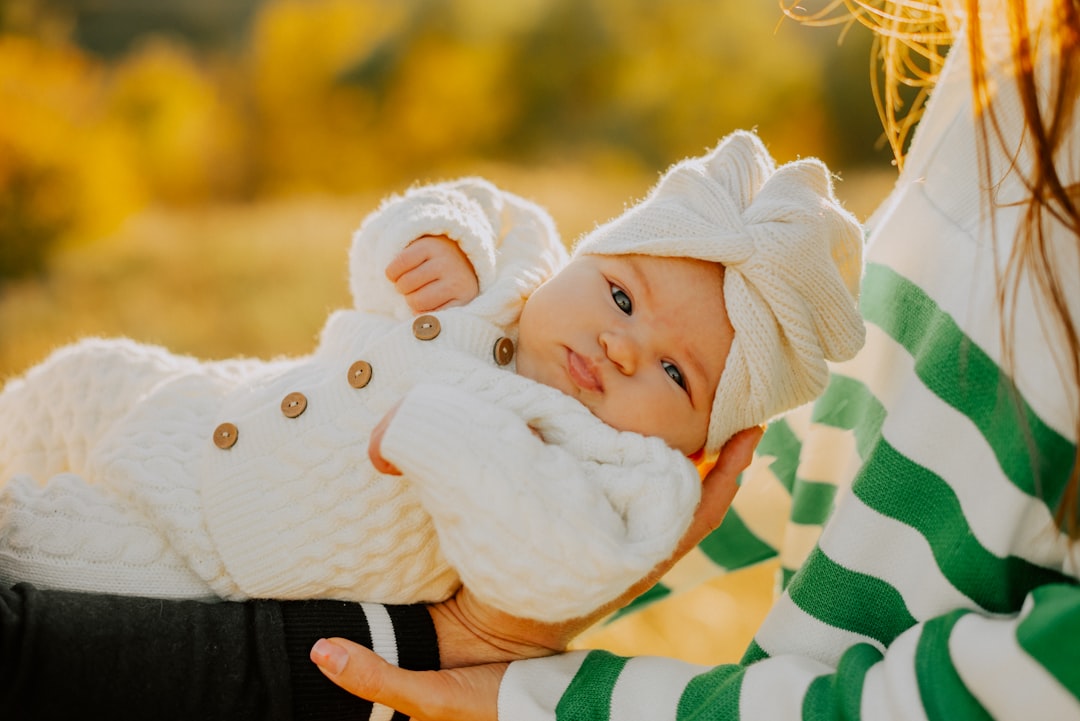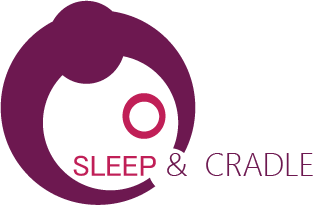
Creating a safe sleep environment is essential for a restful and rejuvenating sleep experience. This ultimate guide will walk you through the steps to ensure your baby’s sleep space is optimized for safety and comfort.
From choosing the right mattress to establishing a soothing ambiance, we will cover every aspect of creating an environment that promotes safety. With our expert guidance, you will appreciate how your baby’s sleep environment fosters relaxation and improves their quality of sleep, ultimately improving the entire family' sleep quality.
In today's fast-paced world, where we are constantly bombarded with technology and distractions, creating a sanctuary where your baby can escape the outside world and achieve restful sleep is more important than ever. Our practical strategies for creating this ideal sleep environment includes minimizing noise disruptions, managing light exposure, and maintaining an optimal temperature for sleep amongst others.
Sleep is vital for your baby’s well-being, growth and cognitive development. A safe sleep environment promotes quality sleep, helping your baby wake up refreshed, happy and ready for the day. Invest in your baby’s sleep and safety and experience the numerous benefits.
Importance of a Secure Sleep Environment
Creating a safe sleep environment is an essential part of your baby’s sleep health, ensuring that you and your baby can relax and unwind without worrying about potential hazards or disturbances. It promotes tranquility, allowing your baby to fall asleep faster and stay asleep. One of the primary benefits of a secure sleep environment improving sleep quality. When your baby feels safe and comfortable in their sleep space and associates that environment with sleep, they achieve a deep and restorative sleep cycle, invariably resulting in improved mood, and neuroplasticity. A secure sleep environment also plays a vital role in reducing the risk of accidental suffocation, that can result from bed sharing. By eliminating potential hazards and implementing safety measures, you can minimize the chances of accidental that could.Common Sleep Environment Hazards
By being aware of these potential dangers, you can take the necessary precautions to mitigate risks and ensure a safe sleep space. One common sleep environment hazard is clutters. A cluttered sleep space can increase the risk of suffocation, and a cluttered nursery increases the risk of tripping and falling, It's important to keep your baby’s nursery tidy and organized, removing any unnecessary items or furniture that may obstruct your path or baby’s path if they have started crawling or walking that could pose a threat. Another hazard to watch out for is loose cords and wires. These can become tripping hazards or cause electrical accidents if not properly secured especially when your baby has started to move around independently. Make sure to keep cords neatly tucked away or use cord covers to prevent accidents. Additionally, it's important to be mindful of the placement of furniture and objects in your sleep environment. Avoid positioning heavy furniture near windows or doors, as they may become potential hazards during emergencies or natural disasters. Secure heavy furniture to the wall to prevent tipping accidents, especially if you have young children or pets.Creating a Clutter-Free Nursery
A clutter-free nursery is essential for a secure sleep environment. Not only does it reduce the risk of accidents, but it also promotes a sense of calm and relaxation. Here are some tips to create a clutter-free nursery:- Declutter regularly Set aside time to declutter your baby’s nursery and get rid of any items you no longer need or use. This includes clothes, books, and other belongings that may be taking up unnecessary space.
- Organize storage solutions Invest in storage solutions such as bins, baskets, and shelves to organize your baby’s belongings. Assign specific places for different items to prevent clutter from accumulating and improves your time management and you will be more efficient finding suppliers used regularly in caring for your baby.
- Minimize furniture Only keep essential furniture in your baby’s nursery to create more open space. Remove any unnecessary pieces that may contribute to a cluttered environment.
Choosing the Right Mattress and Bedding
When it comes to creating a secure sleep environment, choosing the right mattress and bedding is crucial. A firm and comfortable mattress can significantly impact your baby’s sleep quality and overall well-being. Here's what to consider when selecting a mattress and beddings for your baby- Firmness and support Look for a mattress that provides adequate support for your baby, which would accommodate your baby moving is all directions while sleeping. As recommended by the American Academy of Pediatrics, put your baby to lay in their crib or bassinet on their back with nothing else in there but your baby.
- Material Consider the materials used in the mattress and bedding. Memory foam mattresses are known for their comfort and pressure-relieving properties, while latex mattresses offer natural breathability and durability.
- Hypoallergenic options If there is a family history of allergies or asthma, opt for hypoallergenic bedding materials.
- Bedding quality Choose high-quality bedding that is soft, breathable, and easy to wash. Look for materials like cotton or bamboo, which are known for their comfort and moisture-wicking properties.
Controlling Temperature and Humidity
Maintaining an optimal temperature and humidity level in your baby’s nursery or sleep environment is essential for a restful sleep experience. Extreme temperatures and excessive humidity can disrupt your baby’s sleep and leave your baby feeling uncomfortable throughout the night., leading to multiple night awakenings. Here's how to ensure an ideal room temperature or humidity:- Room temperature The ideal room temperature for a baby’s nursery is typically between 68 to 72 degrees Fahrenheit (20 to 22 degrees Celsius).
- Humidity levels Aim for a humidity level between 30% to 50% to prevent dryness or excess moisture in the air. Use a humidifier or dehumidifier to maintain the desired humidity level.
- Ventilation Ensure proper ventilation and air circulation in your baby’s sleep environment. If possible, aerate your baby’s nursery as good airflow helps regulate temperature and reduces the risk of stuffiness or odors.
- Dressing Do not overdress your baby as overheating could leads to discomfort and death in extreme cases.
Reducing Noise and Light
Noise disruptions and excessive light can significantly impact the quality of your baby’s sleep. To create a secure sleep environment, it's important to minimize these external disturbances. There are some school of thoughts that suggest you allow your baby’s to get used to noises and sleep anywhere so they learn the difference between day and night, as logical as that thought is, you do not need to do that. Here are some strategies to reduce noise and light:- Soundproofing Use soundproofing techniques such as adding rugs, blackout curtains, or acoustic panels to absorb noise and create a quieter sleep environment for your baby.
- White noise machines Consider using white noise machines to mask external noises and promote a peaceful sleep environment.
- Blackout curtains Invest in blackout curtains or blinds to prevent external light from entering your baby’s sleep space. These curtains help create a dark and conducive environment for sleep.
- Doorbell Notice During naps any visitors should be aware not to ring out the bells as these could startle your baby and disrupt them from their sleep, Consider, putting a sign on your doorstep so people communicate with you via text or calling without disrupting your baby’s sleep.
Ensuring Proper Ventilation
Proper ventilation is essential for a secure sleep environment. Good airflow helps maintain air quality, regulates temperature, and reduces the risk of stuffiness or odors. Here's how to ensure proper ventilation in your baby’s sleep space:- Open windows If weather conditions permit, open windows during the day to allow fresh air to circulate in their nursery.
- Use fans Place fans strategically in your baby’s nursery if you so choose to improve air circulation. Ceiling fans, tower fans, or desk fans can help create a comfortable sleep environment.
- Air purifiers Consider using air purifiers with HEPA filters to remove allergens, dust, and other pollutants from the air. This helps maintain clean and fresh air in your baby’s sleep space.
- Regular cleaning Regularly clean and dust your baby’s nursery to prevent the accumulation of allergens, dust mites, and other irritants that can affect air quality.
Childproofing the Sleep Environment
If you have infants that are mobile or toddlers, it's crucial to childproof their sleep environment and the entire home to ensure their safety. Children are naturally curious and may be prone to accidents if the sleep space is not adequately childproofed. Here are some childproofing measures to consider:- Secure furniture Anchor heavy furniture, such as dressers or bookshelves, to the wall to prevent tipping accidents. Use safety straps or brackets for added security.
- Cover outlets Install outlet covers or use outlet plugs to prevent children from inserting objects into electrical outlets.
- Remove choking hazards Keep small objects, cords, and other potential choking hazards out of reach from children.
- Monitor baby's sleep: Use baby monitors or other monitoring devices to keep an eye on your baby's sleep and ensure their safety.
- Hot Coffee Accidents Believe or not, this is a common accident especially with moms that juggle multiple children, while managing their homes, sanity, and careers. As much as possible be intentional on where you place your cups, it should be out of reach even when they climb up and attempt to reach out.
- Supervision: Always have an adult keep an eye on your baby, they are in an integral phase in their development and are up for exploration.
Using Technology for a Secure Sleep Environment
Technology can be both a friend and a foe when it comes to creating a secure sleep environment for your baby. While excessive use of technology can disrupt sleep your sleep as a parent, some technological advancements can enhance the entire families sleep experience. Here are some ways to leverage technology in improving a safe sleep environment:- Smart lighting Utilize smart lighting systems that allow you to adjust the brightness and color temperature of your baby’s nursery lights. This can help create a soothing ambiance and promote better sleep.
- Sleep tracking apps Consider using sleep tracking apps or manually document your babies sleep activities or patterns as this provides insights into their sleep quantity and quality. This can help you identify areas for improvement when faces with challenges in your babies sleep patterns.
- Smart home automation Incorporate smart home automation systems that allows you to control temperature, lighting, and other factors in your baby’s nursery and the entire home. This improves efficiency in your execution and creates a personalized and seamless experience for you.
- Baby monitors Baby monitors are a great way to see and understand your baby’s personality when they are enjoying their quite time or sleeping. Some babies wake up at night play with themselves and put themselves to sleep, do not be in a hurry to jump in to carry them, observe them and understand them when they are not crying hysterically, you may learn one or two things about your little treasure that you probably did not know.
